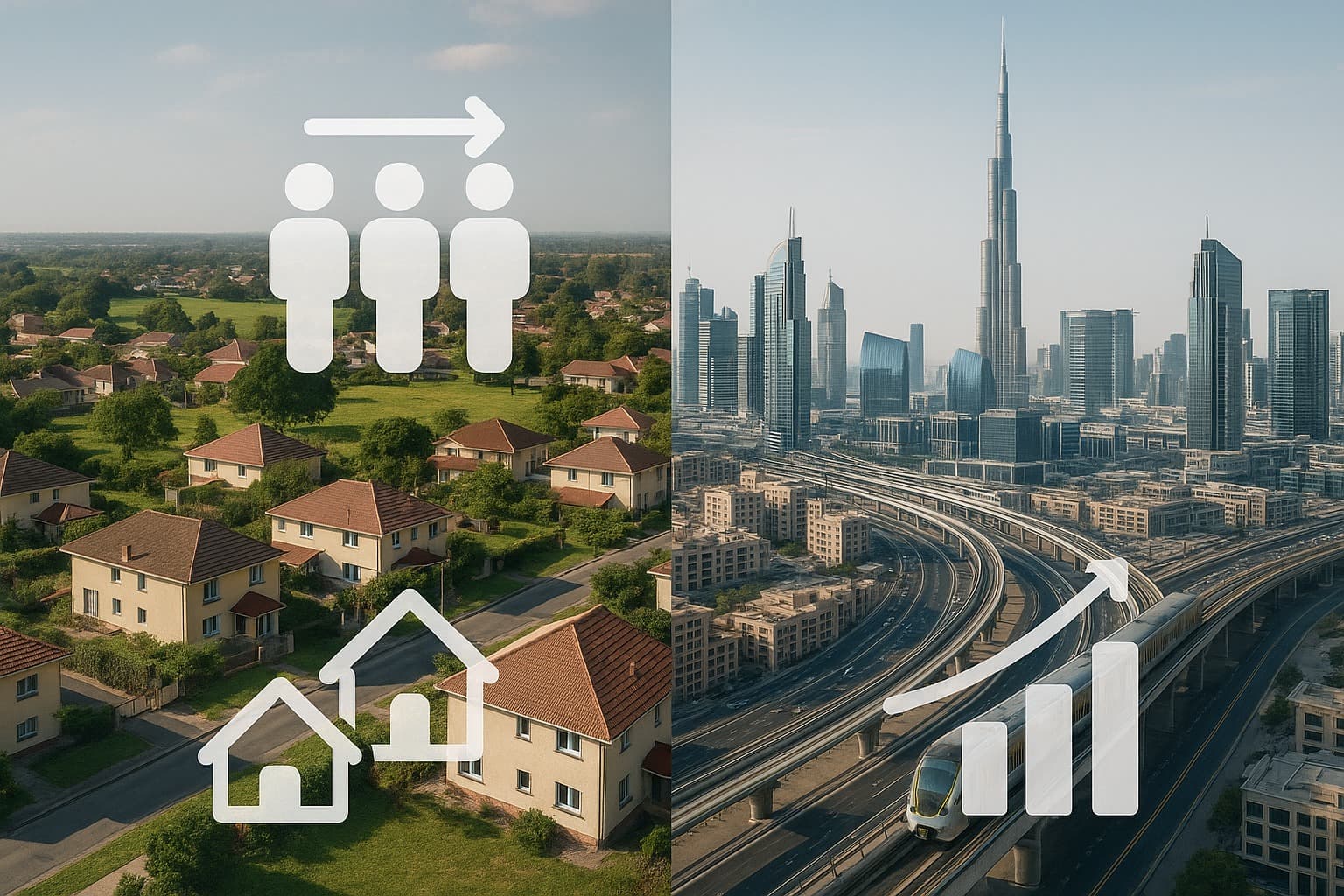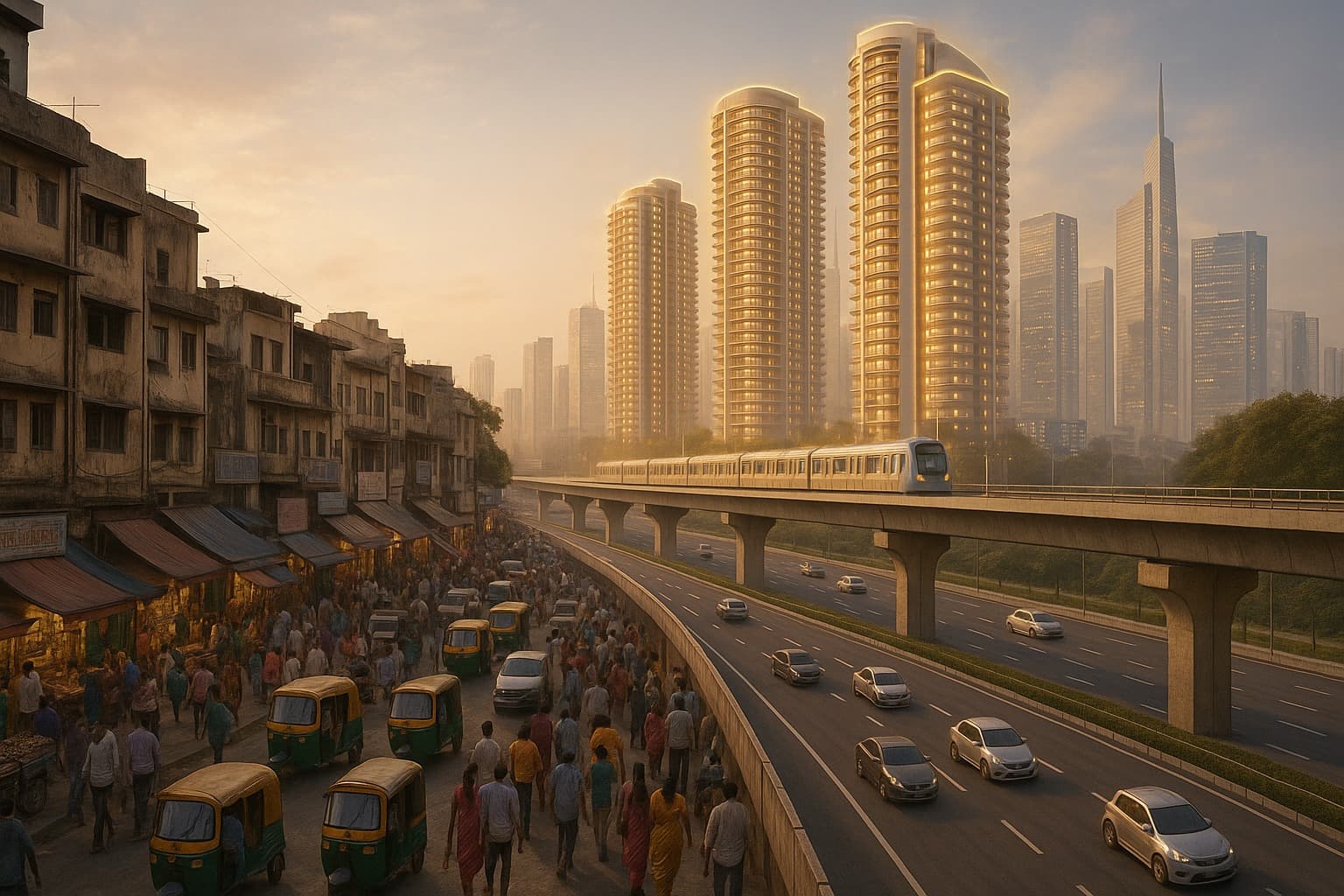Urbanisation and Its Effect on Housing Demand in India
Summary
Urbanisation is reshaping India's housing market, driving demand in both metro and tier-2 cities. Infrastructure development and evolving lifestyle preferences are key factors influencing real estate growth and trends.

Urbanisation and Its Effect on Housing Demand
India is changing faster than ever. From bustling streets in Mumbai to the quiet, yet growing neighborhoods of tier-2 cities like Pune and Jaipur, urbanisation India is reshaping the way we live, work, and invest. Cities are no longer just places to earn a living—they are communities where lifestyle, convenience, and growth converge. With millions moving from villages to cities every year, the impact of urbanisation on housing in India is profound. The demand for homes, apartments, and gated communities is surging, driving real estate urban growth and redefining population and housing patterns across the country.
Why Urbanisation is Changing the Housing Landscape
The story of India’s urbanisation is really a story of opportunity. As more people migrate to cities for jobs, education, and better living standards, the pressure on housing is immense. Cities are expanding, both physically and socially. This growth is fueling housing demand in fast-growing Indian cities, from metro hubs like Bangalore and Mumbai to emerging tier-2 cities such as Surat, Kochi, and Jaipur. Developers are racing to meet this demand with a mix of affordable housing, high-rise apartments, and modern townships. The role of urbanisation in shaping India’s property sector has never been more visible.
Metro Cities: Where Housing Demand Peaks
If you walk through a metro city like Mumbai, Delhi, or Bangalore, the signs of real estate growth due to urbanisation are everywhere. New residential towers, integrated communities, and commercial complexes are cropping up constantly. The influx of young professionals and families has made housing demand skyrocket, while lifestyle expectations are rising alongside. How urbanisation is driving housing demand in India can be seen in these vibrant urban centers, where the mix of opportunity and modern living is fueling both property prices and rental yields.
Metro cities are no longer just work hubs—they are living hubs. Families seek homes near schools, parks, and hospitals. Professionals want apartments close to tech parks or business districts. Developers have responded, and today, the Indian housing market 2025 forecast shows consistent growth in metros, both in volume and in value.
Tier-2 Cities: The New Frontier

But the story doesn’t end with metros. In fact, some of the most exciting urbanisation and property market trends are unfolding in tier-2 cities. Cities like Pune, Kochi, and Jaipur are attracting young buyers and investors alike. Housing demand growth in metro and tier-2 cities is driven not only by affordability but also by quality of life—less traffic, cleaner neighborhoods, and rising infrastructure standards.
These cities are growing in a way that metros can no longer accommodate. With land more available, developments are more spacious, and modern amenities are easier to integrate. The impact of city expansion on Indian real estate market is evident as both end-users and investors flock to these areas. It’s no surprise that tier-2 cities are emerging as real estate hotspots in India 2025, offering strong returns and lifestyle benefits.
Trends Shaping Housing Demand
Urbanisation is not just increasing housing demand; it’s changing the very nature of housing. Some trends are clear:
High-rise complexes: Limited land in urban centers has pushed developers upward. Apartments are not just homes—they are communities with gyms, gardens, and shared spaces.
Integrated townships: Modern families want everything close—schools, shopping, healthcare, and leisure. This has driven real estate urban growth in carefully planned communities.
Affordable housing: Governments and developers are collaborating to meet the needs of middle-income families, keeping population and housing pressures manageable.
Every trend reflects a direct impact of urbanisation India on the housing market. Cities are expanding not only in size but also in the quality and diversity of living options.
Infrastructure Driving Housing Demand
Urbanisation doesn’t happen in isolation. Roads, metro lines, airports, and commercial hubs directly influence housing demand in fast-growing Indian cities. Areas that were once peripheral are now prime residential hotspots. This connectivity has created high-growth property areas in metro cities, transforming suburban zones into thriving communities.
Developers, recognizing how urbanisation is driving housing demand in India, are investing in areas with future infrastructure projects. From smart city initiatives to metro expansions, every project fuels real estate growth due to urbanisation and contributes to sustainable urban development.
Policy Support: Making Growth Sustainable
Government policy has also played a crucial role. Schemes like PMAY have made affordable housing accessible to millions, ensuring that urbanisation and property market trends remain inclusive. RERA and housing finance reforms have built investor confidence, helping future housing demand trends due to urban growth in India remain strong.
The synergy between private developers and public initiatives is critical. Cities can now grow responsibly, providing homes to urban migrants without overwhelming infrastructure. This careful planning is key to understanding the role of urbanisation in shaping India’s property sector.

Challenges and Opportunities
Of course, rapid urbanisation comes with challenges. Infrastructure strain, rising property prices, and congestion are real issues. But these challenges also bring opportunities. Smart urban planning, green buildings, and community-focused projects are gaining traction. Investors and homebuyers who understand these dynamics are well-positioned to capitalize on housing demand growth in metro and tier-2 cities.
Urbanisation in India is not just about moving to the city; it’s about living smarter, investing wisely, and planning for a future where real estate urban growth meets the needs of a growing population.
Looking Ahead: Housing in 2025 and Beyond
The Indian housing market 2025 forecast predicts continued expansion in both metro and tier-2 cities. Urbanisation will remain the key driver, creating housing demand across income groups and property segments. Developers will continue focusing on integrated townships, high-rise apartments, and affordable housing solutions. By understanding how urbanisation is driving housing demand in India, homebuyers and investors can make informed choices and secure strong returns.
From Mumbai’s high-rises to Pune’s sprawling townships, from Bangalore’s tech corridors to Jaipur’s emerging neighborhoods, population and housing dynamics are shifting rapidly. The cities that grow smartly, invest in infrastructure, and plan for inclusive development will shape India’s real estate landscape for decades to come.
Conclusion
Urbanisation in India is not just a trend—it’s a transformative force reshaping Indian cities development and driving real estate urban growth. Metro cities continue to attract high demand, while tier-2 cities are emerging as new hubs for investors and homebuyers. The impact of urbanisation on housing in India is evident in high-rise complexes, integrated townships, and affordable housing projects. Understanding the role of urbanisation in shaping India’s property sector and future housing demand trends due to urban growth in India is essential for anyone looking to invest or buy a home in today’s dynamic market.
Summary (100 words)
Urbanisation in India is transforming the housing landscape, driving housing demand across metro and tier-2 cities. Population migration, city expansion, and infrastructure development are key factors in real estate growth due to urbanisation. Metro cities like Mumbai, Delhi, and Bangalore lead in demand, while tier-2 cities like Pune, Kochi, and Jaipur are emerging as high-growth residential hubs. Trends like high-rise apartments, integrated townships, and affordable housing reflect the role of urbanisation in shaping India’s property sector. By understanding how urbanisation is driving housing demand in India, investors and homebuyers can align with future housing demand trends due to urban growth in India.
